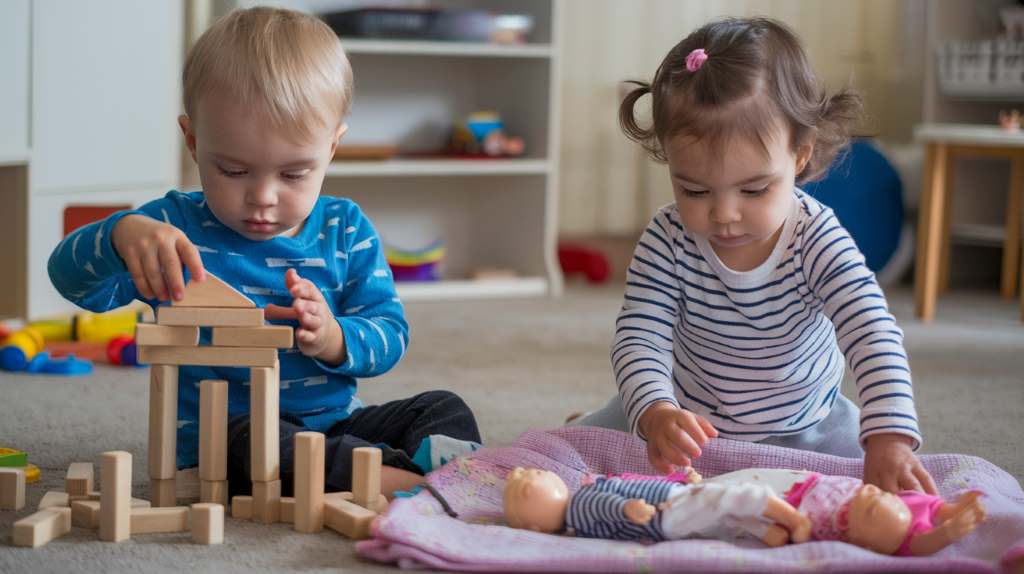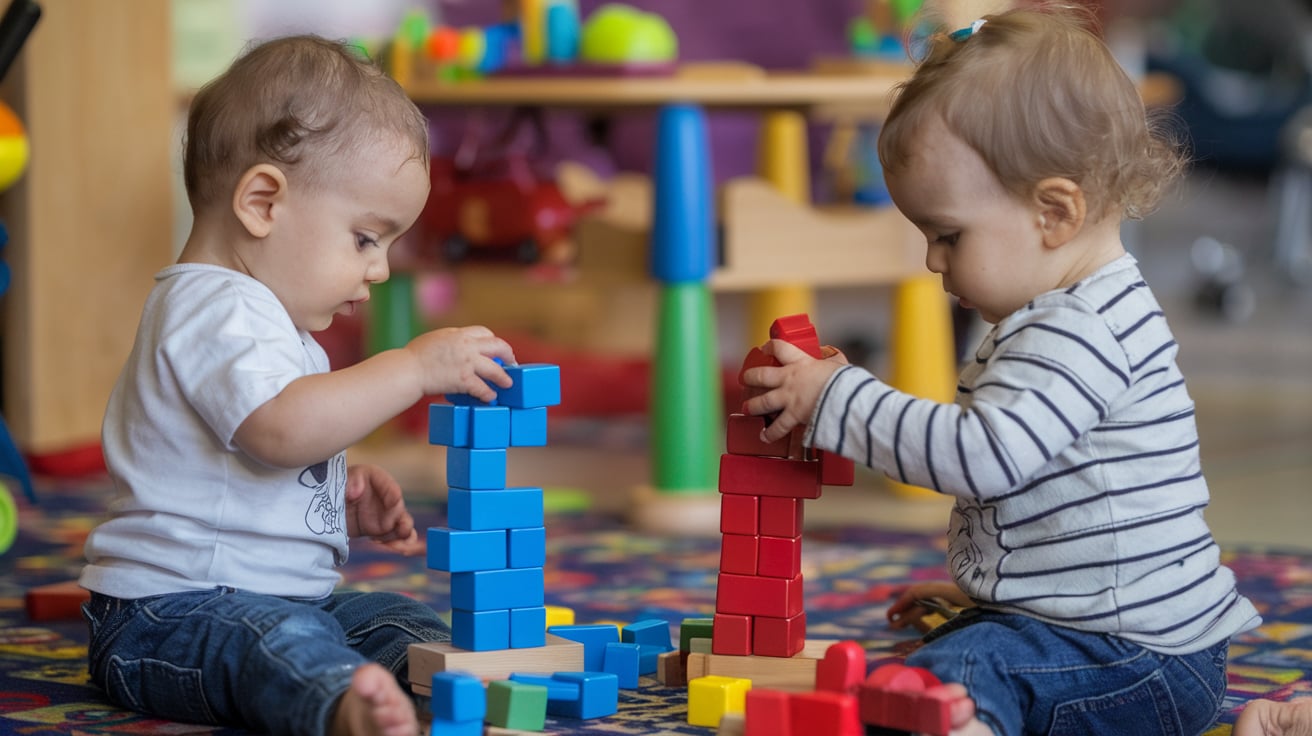Imagine two toddlers, each engrossed in their own world of blocks. They sit near each other, occasionally glancing at the other’s creation, but ultimately focused on their individual towers. This is parallel play in action – a common and crucial stage in a child’s social development. If you’re interested in learning more about how this type of play supports growth, explore Bubblewrapfun blog for insights on early childhood interactions and developmental milestones.
Parallel play is characterized by children playing alongside each other, but not directly with each other. They may be engaged in similar activities or completely different ones, but the key is the lack of direct interaction. This seemingly solitary play style actually lays the groundwork for important social skills like cooperation, sharing, and communication.
Why is Parallel Play Important?
While it might appear as though children engaged in parallel play are simply off in their own worlds, this type of play offers a wealth of benefits. Understanding what is parallel play reveals that it helps children develop social skills and learn how to interact with others. Even though they are playing alongside each other rather than directly with one another, they observe and learn from their peers, which lays the groundwork for more complex social interactions later on:
- Develops Independence: Parallel play allows children to explore their own interests and ideas at their own pace, fostering a sense of autonomy and self-reliance.
- Encourages Observation and Imitation: By observing others, children learn new ways to play, solve problems, and use their imaginations, whether it’s through creative games or using simple objects like napkins in their play. They may mimic actions or sounds, indirectly learning from their peers.
- Reduces Social Pressure: Parallel play provides a comfortable environment for children to engage with others without the pressure of direct interaction. This can be particularly beneficial for shy or introverted children.
- Builds a Foundation for Social Interaction: Though not directly interacting, children are still aware of each other’s presence. This shared experience helps them become comfortable in social settings and prepares them for more complex interactions in the future.
Examples of Parallel Play
Parallel play can take many forms. Here are a few examples:
- Building Blocks: Two children might be building separate towers with blocks, occasionally observing each other’s techniques and creations.
- Playing with Dolls: One child might be dressing a doll while another child feeds a toy baby nearby.
- Sandbox Fun: Children may be digging in the same sandbox, each creating their own castles or roads.
- Art Time: Two children might be painting at the same table, each focused on their individual artwork.
- Playground Activities: One child might be swinging while another slides down the slide.
Encouraging Parallel Play
Parents and educators can foster parallel play by creating an environment that supports this type of interaction:
- Provide a Variety of Activities: Offer a range of toys and materials that encourage different types of play, including baby bath toys.
- Create Defined Play Spaces: Set up distinct areas for different activities, such as a block corner, a reading nook, or an art station.
- Allow for Ample Space: Ensure there’s enough room for children to spread out and play without feeling crowded.
- Avoid Forcing Interaction: Resist the urge to push children into playing together. Allow them to engage at their own pace.
- Model Positive Social Behavior: Show children how to share space and materials, even when playing independently.
The Transition to Cooperative Play
As children mature, parallel play gradually evolves into more interactive forms of play, such as associative play and cooperative play.
In associative play, children begin to share toys and materials and engage in brief conversations, though their play remains largely independent. Cooperative play involves shared goals and coordinated efforts, such as building a tower together or playing a game with rules.
Recognizing the Value of Parallel Play
Parallel play is a valuable stage in a child’s social development. It provides a safe and comfortable space for children to explore their world, learn from others, and develop the skills necessary for more complex social interactions. By understanding and supporting parallel play, parents and educators can help children build a strong foundation for social success.





